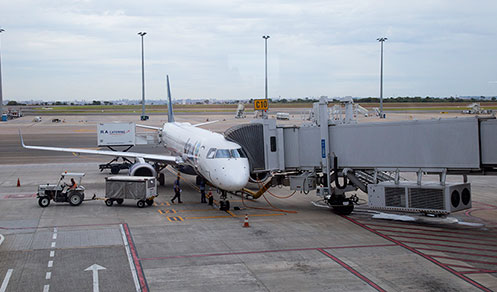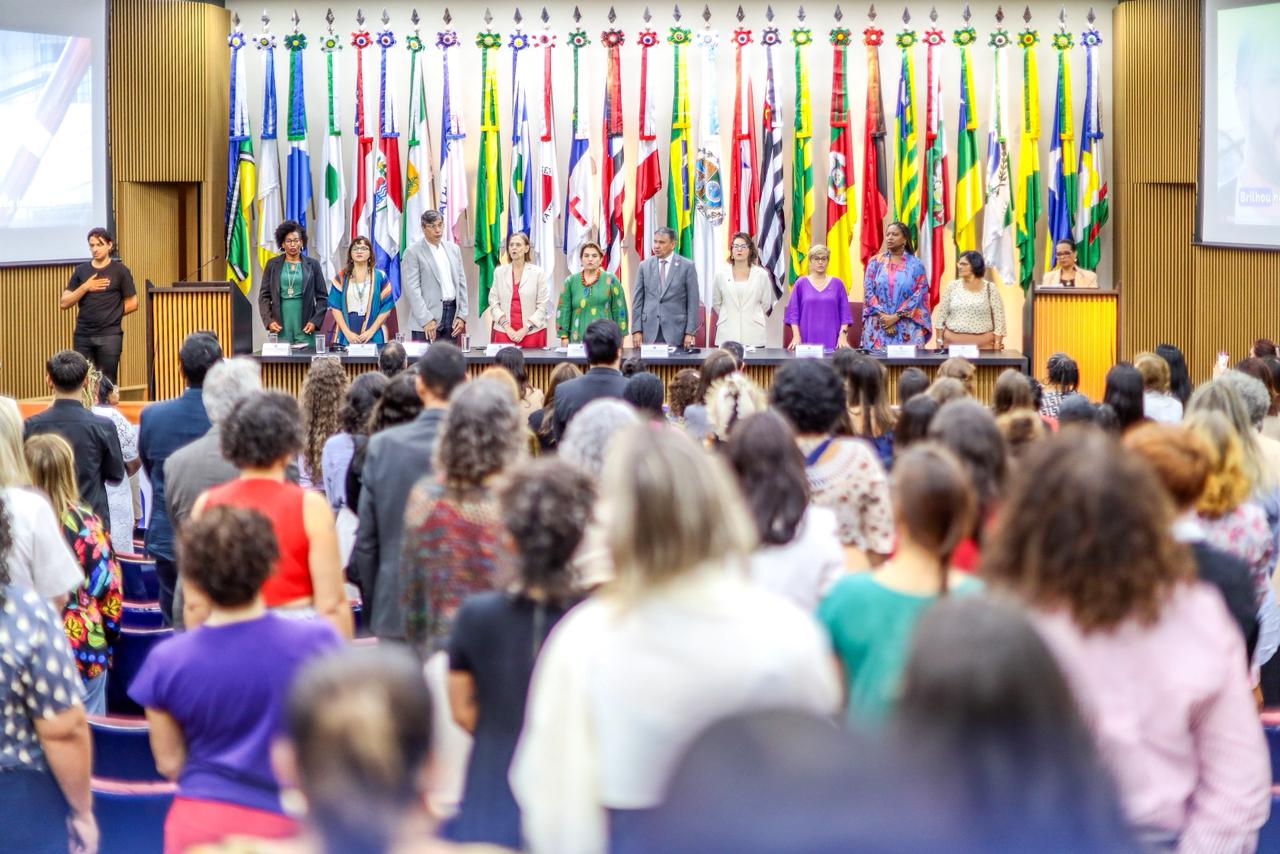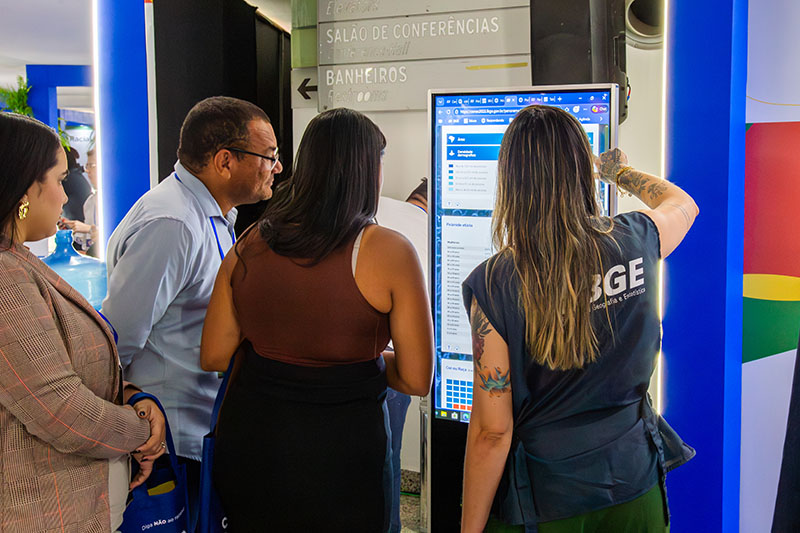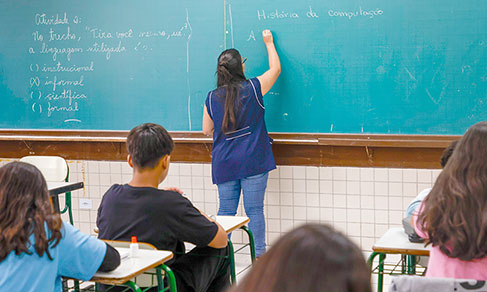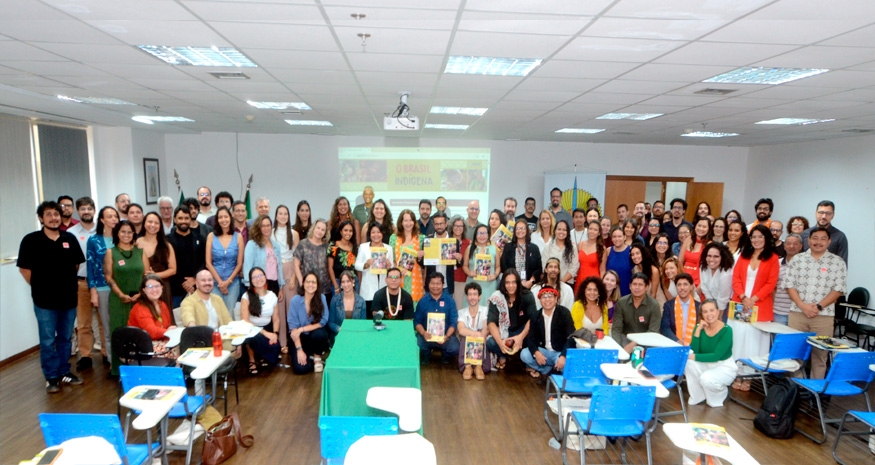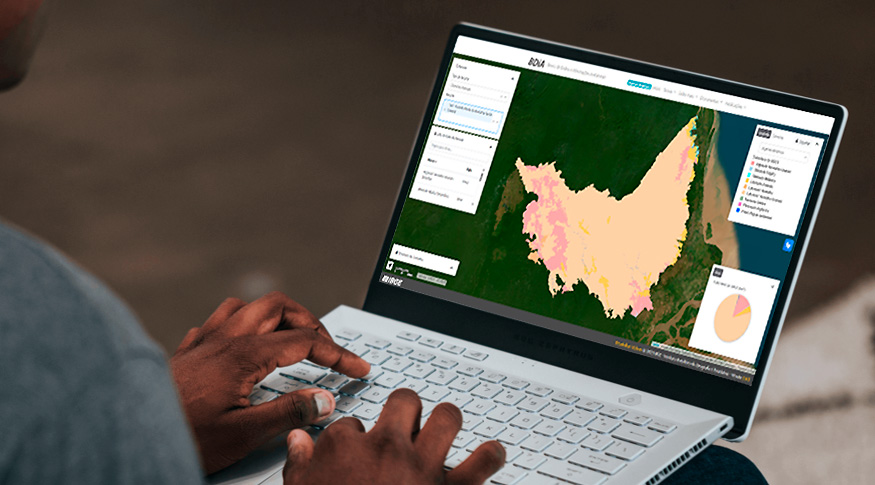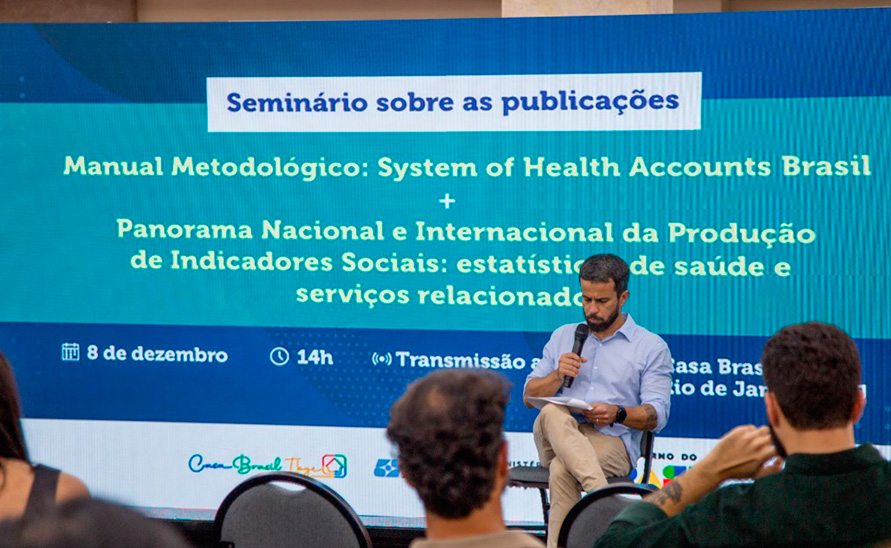Continuous PNAD
In Brazil, 88.9% of the population had a mobile phone in 2024
July 24, 2025 10h00 AM | Last Updated: July 26, 2025 05h15 PM
Highlights
- In 2024, 167.5 million persons aged 10 and over in Brazil had a mobile phone for personal use, corresponding to 88.9% of the population in this age group.
- From 2016 to 2024, in the population aged 10 and over, the ownership of a mobile phone went from 77.4% to 87.6% in 2023 and to 88.9%, in 2024. In rural areas, the increase was even more significant, with a change from 54.6%, in 2016, to 77.2%, in 2024.
- By color or race, 91.1% of the White population had a mobile phone, a percentage that surpassed that for black persons (88.5%) and brown ones (87.0%).
- From 2019 to 2024, the proportion of older adults with a mobile phone for personal use increased from 66.6% to 78.1%, the highest among the age groups surveyed.
- In 2024, it is estimated that 20.9 million in the country did not have a mobile phone for personal use, representing 11.1% of the population aged 10 and over. This percentage was 18.6%, in 2019, and 12.4%, in 2023.
- In the youngest age group (10 to 13), the main reason reported for not having a mobile phone was concern with privacy and security, for 24.1%. In the second and third positions were lack of necessity (22.8%) and the price of the telephone (21.5%).
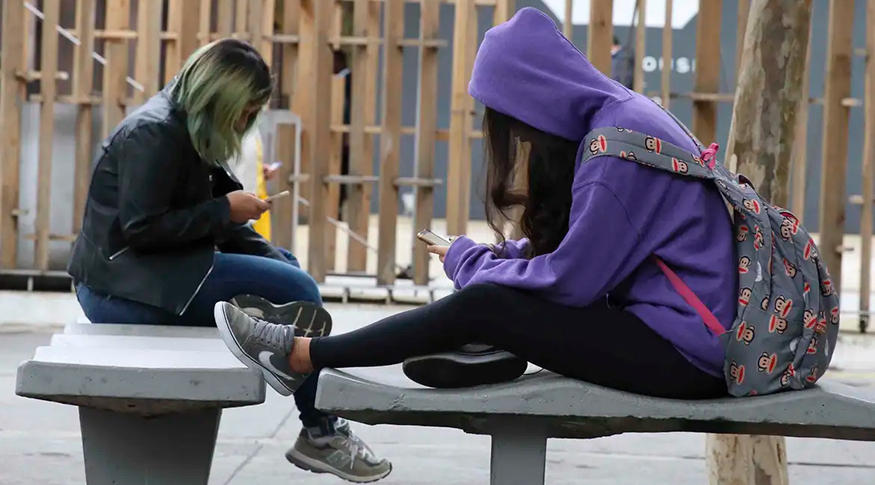
In 2024, 167.5 million persons aged 10 and over had a mobile telephone for personal use in the country. That corresponded to 88.9% of the population in this age group. In urban areas, 90.5% of the population investigated had a mobile telephone for personal use, whereas in urban areas the percentage was 77.2%. Data come from the annual module of Continuous PNAD on Information and Communication Technology (TIC), released today by the IBGE. Read also the news on information and communication technology in housing units and on the population aged 10 and over that accessed the Internet.
The analysis by sex shows that 90.2% of the women and 87.5% of the men had a mobile telephone for personal use in Brazil. By color or race, it is observed that 91.1% of the white population had a mobile phone, figure higher than that for black persons (88.5%) and brown ones (87.0%).
The ownership of a mobile phone increased from 77.4% in 2016 to 87.6% in 2023 and, then to 88.9% of the population aged 10 and over in 2024. In rural areas, the increase was even higher, from 54.6%, in 2016, to 77.2%, in 2024.
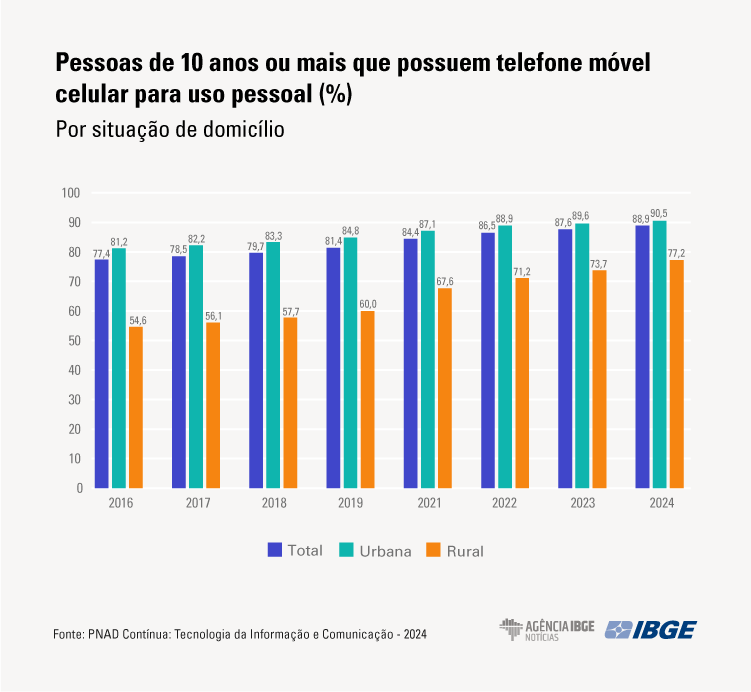
Regional differences regarding the ownership of a mobile telephone for personal use have decreased progressively. The lowest percentages, in 2024, remained in the North (83.7%) and Northeast (84.0%), whereas in the other Major Regions the percentages ranged between 91.3% (Southeast) and 92.6% (Central West).
From 2023 to 2024, in the population aged 10 and over with a mobile telephone for personal use, the share of the population with access to the Internet using this means went from 96.7% to 97.5%. In the rural area, this indicator increased by 1.7 p.p., from 94.3% to 96.0%, and remained, however, a little below that of the urban area, which changed from 97.0% to 97.7%.
78.1% of the older adults have a mobile telephone
In 2024, the percentage of persons with a mobile telephone for personal use, in each age group, reached its lowest among persons aged 10 to 13 (56.5%), and was higher among those aged 14 to 19 (87.6%). The main share were found in the group 25 to 29 years of age (96,5%). In the other age groups, the percentage dropped gradually up to the group of adults aged 50 to 59 (92.4%), and reaching the steepest drop among persons 60 years of age and over (78.1%).
Between 2023 and 2024, there was a positive change in the percentage of persons who had a mobile telephone for personal use in all the age groups. The biggest increase was that among persons 14 to 19 and 60 and over, both groups having recorded an increase of 2.0 p.p. last year. From 2019 to 2024, the biggest increase was that in the elderly population (11.5 p.p.), which went from 66.6% to 78.1%.
In the public education system, 73.7% of the students have a mobile telephone, against 94.2% in the private system
In 2024, whereas 94.2% of the students in the private education system had a mobile telephone for personal use, this percentage was only 73.7% among those in the public system.
In primary school, only 60.1% of the students in the public education system had a mobile telephone, against 78.0% of the private system, a difference of 17.9 p.p. Among the students in high school, the difference by type of education system drops to 6.3 p.p. (90.7% of the public system and 97.0% of the private system), whereas among higher education students the percentage is almost the same and reaches almost the majority of both groups (99.2% and 99.6%, respectively).
30.4% of the population aged 10 and very did not have a mobile telephone because they did not know how to use it
In 2024, it was estimated that 20.9 million did not have a mobile telephone for personal use in Brazil, representing 11.1% of the population aged 10 and over. This percentage was 18.6%, in 2019, and 12.4%, in 2023.
The analysis of these people’s profile by sex, in 2024, showed that 54.4% were men and 45.6%, were women. By age group, 36.9% were aged 60 and over, and 24.2% were 10 to 13 years of age. By level of education, 80.3 had no schooling or had not completed primary education.
The three main reasons reported by persons 10 and over for not having a mobile phone were: not knowing how to use it (30.4%); lack of necessity (21.8%) and the appliance was expensive (19.4%).
The other reasons reported were: use of another person's mobile telephone (10.8%); concern with privacy or security (7.6%); expensive service (2.4%); and mobile telephony services not available in the places they frequented (0.5%).
Concern with privacy and security increases
Between 2022 and 2024, there has been a gradual reduction in the percentage of persons who reported the price of a mobile telephone as the main reason for not having one, with annual drops of 1.4 p.p. in 2023 and 4.0 p.p. in 2024. Concern with privacy or security, on the other hand, increased in the period, having been mentioned by 4.7% of the persons in 2022, having increased to 6.1% in 2023 and to 7.6% in 2024.
By age group, considering the two groups that concentrated most persons who did not have a mobile phone, the reasons mentioned varied significantly. For persons aged 10 to 13, the most common reason was concern with privacy or security (24.1%), besides lack of necessity (22.8%) and expensive mobile telephones (21.5%), being these two reasons also reported by the overall population surveyed.
Gustavo highlights that, “as also observed regarding Internet access, between 2022 and 2024, there has been a gradual decrease in the percentage of persons that said the price of a mobile telephone was the main reason for their not having one, whereas the share of concern with privacy or security increased in the period, with a steeper rise in younger age groups.”
Also, another important reason in this age group was using another person's mobile telephone (17.7%). Among those aged 60 and over, on the other hand, a fact that stands out is that more than half of the persons without a mobile phone did not know how to use it (59.3%); followed by lack of necessity, reported by 24.1% of the older adults.
Among students, the price is the main reason for not having a mobile telephone
Among the students, in 2024, the main reasons for not having a mobile telephone were: the phoe was expensive (26.0%), lack of necessity (21.0%) and concern with privacy or security (20,2%). Another frequent reason was using another person's mobile telephone (18.2%).
Among non-students, the reason of not knowing how to use the telephone (44.0%) was the most significant one, followed by lack of necessity (22.2%), whereas the financial reason regarding the telephone represented a lower percentage (16.0%).
As most of the students who did not have a mobile telephone for personal use belonged to the public education system (89.9%), the reasons reported were concentrated in the main reasons presented by the students overall: the price (27.7%), lack of necessity (20.3%), concern with privacy and security (18.7%) and using another person's mobile telephone (18.6%). Nevertheless, for students in the private education system, the main reason was concern with privacy or security (33.4%), followed by lack of necessity (26.7%). A much smaller share (10.6%) mentioned the price as the main reason.
More about the survey
Since 2016, the annual module of Information and Communication Technology (TIC) of the Continuous National Household Sample Survey (Continuous PNAD) analyses the access to the Internet and the ownership of a mobile telephone for personsl use, disaggregated by geographies: Brazil and Federation Unnits. Access the support material and see the complete publication for additional information.



